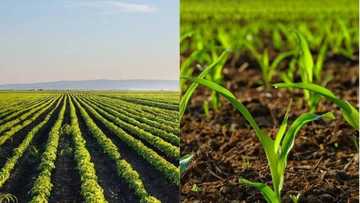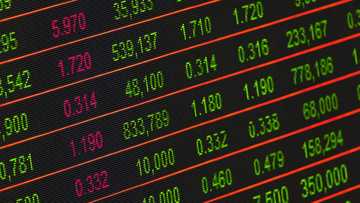Top 10 indicators of economic development in a country
What is economic development? It’s a multifaceted process embracing economic growth, structural changes in the economy, improving the conditions, and quality of life of the population. Various models of economic development are known. But for all their diversity and national characteristics, there are general patterns and parameters characterizing this process. In this article, you will learn about top 10 most important indicators of economic development.

1. GDP
Gross Domestic Product (GDP) is the most widely used tool for assessing a country's economic development. "Gross" means that all production is evaluated regardless of its goals. It can be directed to immediate consumption, investment in new fixed assets or to replace impaired fixed assets. "Domestic" refers to the territory of the country.
There are many ways to measure GDP. Usually, the following formula is used for this:
GDP = consumer spending + gross investment + public expenditure + (export - import).
Most often, GDP is measured on a quarterly basis or per year. Based on the prevailing factors in the economy, central banks and other institutions lower or increase the forecasts of its growth. To assess the quality of life, the GDP per capita (per inhabitant of the country) is usually used.
2. GNI
Gross National Income (GNI) is the aggregate market value of the total volume of final production of goods and services in the economy in one year. The final means are purchased for direct use and not for resale or further processing.
READ: Branches of economics and their meanings

GNI is the best and most affordable indicator of the health of the economy and the quality of life of the population. In the calculation of GNI, non-productive transactions are excluded: financial (state and private transfer payments, operations with securities) and sale of second-hand goods.
GNI is determined by summing up all the income received from the production in the given year.
Methods of calculating GNI:
- GNI = consumer spending of households + investment costs of business + government purchases of goods and services + expenses of foreigners;
- GNI = expenses and payments not related to the payment of income + wages + rental payments + interest + profit.
There are nominal and real GNI. Nominal GNI is expressed in current prices, in the currency of the respective country. Gross National Income adjusted for inflation (price increases) or deflation (price reduction) is the real GNI expressed in dollars at a constant rate.
3. Improving the living standard
The standard of living is one of the most important economic indicators of development. Under the standard of living is the provision of the population with the necessary material goods and services, the adequate level of their consumption and the degree of satisfaction of reasonable (rational) needs. The well-being is also considered so.
The monetary valuation of the goods and services actually consumed in the average household within a certain period of time and corresponding to a certain level of satisfaction of needs is the cost of living.

In a broad sense, the term "standard of living of the population" includes the conditions of life, labor conditions, everyday leisure, health, education, natural habitat, etc. In this case, the term "quality of life" is also often used.
4. Branch structure of the economy
There are "primary", "secondary", and "tertiary" sectors of the economy. This indicator is determined by the structure of GNI or the structure of employment of economically active population.
In the more developed countries, the service sector prevails, while in the less developed ones - agriculture or the mining industry. A high proportion of people employed in agriculture indicates that a significant part of the population produces food only for their own consumption.
On the contrary, the low share of citizens employed in agriculture area indicates its high efficiency - a small number of farmers satisfy the needs of the rest of society or the country does not produce food in general but buys it by selling oil or high-tech products.
In more developed countries, there is a trend of job growth in the tertiary sector of the economy and a decline in industrial employment.
5. Inflation level
Among the causes that affect inflation, there are money emission, trade union activities aimed at increasing the wages of employees, imperfect competition in the market among manufacturers, and many others.
Limitation of inflation in modern market conditions is necessary, not only to protect the economy from overheating but also to prevent the deterioration of the economic situation in the conditions of recession or crisis.

However, the risk of inflation at the peak of economic recovery is higher than in conditions of recession. One aspect of economic development is the increase in output, which is achieved by the growth of employment.
This is beneficial for politicians. They encourage the central bank to pursue a monetary policy, stimulate economic growth involving the saturation of the market with money. This creates the prerequisites for the emergence of inflation.
6. Human Development Index
This is a combined indicator characterizing human development in countries and regions of the world that is drawn up by the United Nations Development Programme and is used in the special series of reports of the United Nations (UN).
It consists of three main components that characterize human development: life expectancy, education, and living standards. Education is measured by the literacy of adults and the average number of years of study. The standard of living is measured by real GDP per capita adjusted for the local cost of living (purchasing power parity).
7. Development of entrepreneurship
The social importance of small business is determined by the massiveness of a group of small proprietors - owners of enterprises and their employees whose total number is one of the most significant qualitative characteristics of the economy of Nigeria.

It is this group of the active population that serves the bulk of consumers, produces a complex level of products and services in accordance with rapidly changing market requirements.
The development of small business in Nigeria contributes to the gradual creation of a broad stratum of small owners independently providing their own well-being and a decent standard of living. All this is the basis of socio-economic reforms.
8. Place of the country in the international division of labor
This refers to the specialization of economies of individual countries in the production of a certain type of goods and services that they exchange. This indicator serves as an objective basis for the internationalization of the economic area of the world community and the foundation for the peaceful coexistence of states.
9. Population growth
Rapid population growth lowers the sums of savings, increases labor force and makes it difficult to control it, aggravates the quality of labor resources by reducing the level of spending on education and health, weakens technical innovations, reduces the number of resources per person, and ultimately slows GDP growth per capita.
10. Employment
One of the main goals of the national economy is to achieve a high level of employment. This does not contradict the laws of the country but it is aimed at satisfying personal or social needs, while bringing earnings to the people. The able-bodied population includes all those who may work by age and for health reasons.

Now you know what the main indicators of economic development of any country are. We hope that this information was useful for you.
READ: What is the main difference between economic growth and economic development?
Source: Legit.ng






